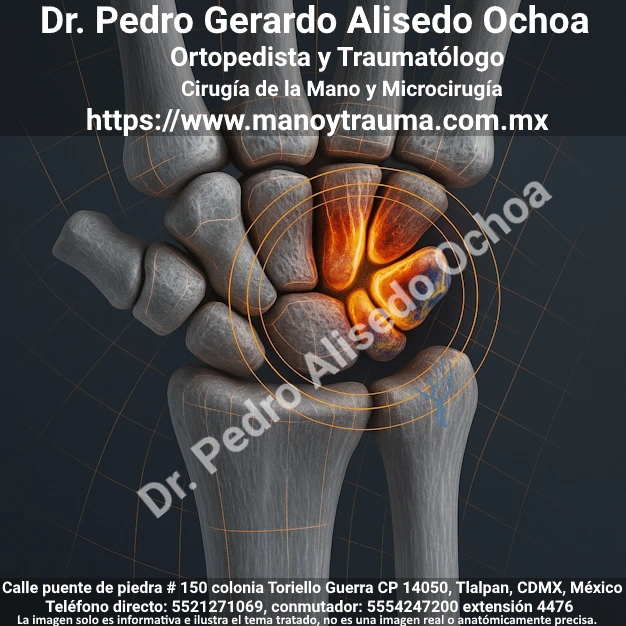Estrategias para el manejo del dolor sin opioides en pacientes con anticoagulación oral sometidos a cirugía de tejidos blandos de la mano
J Hand Surg Am- ASSH
Opioid-Free Pain Management Strategies for Patients on Oral Anticoagulation Undergoing Soft Tissue Hand Surgery – Journal of Hand Surgery
@JHandSurg
EstrategiasParaElManejoDelDolorSinOpioides en pacientes con #AnticoagulaciónOral sometidos a cirugía de tejidos blandos de la mano
@VAPhiladelphia @PennMedicine
#Hemorragia #AINE #CirugíaDeMano
| Estrategia | Mecanismo / Acción Principal | Beneficios | Riesgos / Limitaciones | Adecuado para pacientes anticoagulados | Nivel de evidencia en el artículo |
|---|---|---|---|---|---|
| AINEs no selectivos (ibuprofeno, ketorolaco, naproxeno) | Inhibición COX-1/COX-2 → ↓ prostaglandinas → ↓ dolor e inflamación | Analgesia potente; eficacia comprobada en cirugía de mano | ↑ riesgo de sangrado por inhibición plaquetaria; riesgo GI; interacción con anticoagulantes | Uso limitado y cauteloso (mínima dosis y duración) | Alto (múltiples estudios citados) |
| AINEs COX-2 selectivos (celecoxib) | Inhibición selectiva COX-2 → analgesia sin inhibir COX-1 plaquetaria | Menor riesgo de sangrado y GI; eficacia analgésica similar | Riesgo cardiovascular; evidencia limitada en combinación con DOACs | Preferibles sobre AINEs no selectivos | Moderado |
| Acetaminofén | Analgesia central no opioide | Seguro con DOACs; base del esquema multimodal; buena tolerancia | En warfarina ↑ INR si dosis >2 g/día; hepatotoxicidad a dosis altas | Muy seguro (excepto precaución con warfarina) | Alto |
| Gabapentinoides (gabapentina, pregabalina) | Modulan canales de calcio → ↓ transmisión nociceptiva | Reducen necesidad de opioides; no afectan coagulación | Somnolencia, mareos, riesgo de caídas (sobre todo en adultos mayores) | Generalmente seguros, vigilar SNC | Moderado |
| Anestesia regional / local | Bloqueo nervioso o infiltración local de anestésico | Disminuye dolor agudo y consumo de opioides hasta 72 h | Riesgo de hematoma en bloqueos proximales; falta de datos de seguridad | Preferir infiltración local sobre bloqueos profundos | Moderado |
| Medidas no farmacológicas (hielo, elevación, educación) | Reducción de edema; manejo de expectativas | Disminuye dolor y reduce consumo de opioides; sin riesgos | Requiere adherencia del paciente | Totalmente seguras y recomendadas | Alto |
| Opioides (no recomendados) | Agonismo opioide | Analgesia rápida | Dependencia; efectos adversos; uso desaconsejado; hasta 6% desarrolla uso persistente | Evitar en esta población | Alto (en contra de su uso) |
Introducción
El control adecuado del dolor postoperatorio en cirugía de partes blandas de la mano es esencial, pero el uso de opioides se ha vuelto cada vez menos recomendable debido al riesgo de dependencia y efectos adversos. Las estrategias multimodales no opioides, que combinan medicamentos con mecanismos complementarios, han demostrado ser igual o más efectivas que los opioides. Sin embargo, el uso de AINEs en pacientes bajo anticoagulación oral (especialmente DOACs) plantea un riesgo aumentado de sangrado. Este artículo revisa la fisiología de coagulación relacionada con los AINEs y anticoagulantes, la evidencia sobre su seguridad a corto plazo, alternativas analgésicas no opioides y áreas donde se requieren estudios adicionales.
Métodos
Se realizó una revisión narrativa que integró literatura reciente sobre:
- Interacciones farmacológicas entre AINEs y distintos anticoagulantes, incluyendo DOACs, warfarina y antiagregantes.
- Riesgo de sangrado asociado al uso concomitante, con análisis del número necesario para dañar (NNH).
- Opciones farmacológicas alternativas para el manejo del dolor sin opioides (acetaminofén, gabapentinoides, anestesia regional).
- Estrategias no farmacológicas para disminuir el dolor postoperatorio.
- Lagunas de evidencia, particularmente en pacientes anticoagulados y procedimientos óseos.
Resultados
1. Rol de los AINEs en el manejo del dolor
Los AINEs (ibuprofeno, ketorolaco, naproxeno, meloxicam, celecoxib) son sumamente efectivos para el dolor postoperatorio y su uso está bien validado en cirugía de mano. En esquemas multimodales brindan alivio comparable o superior a los opioides.
2. Interacciones con la cascada de coagulación
- Los AINEs inhiben la COX-1, reduciendo tromboxano A2 y afectando la agregación plaquetaria.
- Los COX-2 selectivos (p. ej., celecoxib) reducen este riesgo, pero podrían asociarse a eventos trombóticos.
- La combinación AINE + anticoagulante puede aumentar hasta 12 veces el riesgo de sangrado, especialmente con anticoagulantes directos o aspirina inadvertida.
3. Seguridad del uso concomitante por corto tiempo
La evidencia es heterogénea:
- Estudios poblacionales sugieren que cursos breves (0–7 días) tienen un riesgo relativamente bajo (NNH 1,370–2,400), aunque estas cifras tienen limitaciones metodológicas.
- Ensayos en DOACs muestran incrementos más preocupantes (NNH entre 30 y 78 según el fármaco).
- Algunos estudios no identifican aumento significativo del riesgo, especialmente cuando se toman medidas de mitigación (COX-2 selectivo + IBP).
En conjunto, el riesgo existe, pero podría ser manejable con:
- mínima dosis efectiva,
- duración muy corta,
- preferencia por COX-2 selectivos,
- coadministración de inhibidores de bomba de protones.
4. Alternativas no opioides
Acetaminofén
Segura para DOACs, base del esquema multimodal. Precaución solo en dosis >2 g/día en pacientes con warfarina.
Gabapentinoides
Pueden disminuir la necesidad de
opioides, no afectan la coagulación, pero sus efectos en SNC requieren
precaución en adultos mayores.
Anestesia regional
Reduce dolor y consumo de
opioides, pero en anticoagulados aumenta el riesgo de hematomas en
bloqueos periféricos; la infiltración local puede ser más segura.
Medidas no farmacológicas
Elevación, hielo
intermitente, educación preoperatoria individualizada; esta última
reduce el consumo de opioides incluso tras procedimientos menores.
Discusión
El manejo del dolor sin opioides en pacientes anticoagulados requiere equilibrar el riesgo de sangrado con la necesidad de un adecuado control analgésico y la evitación de opioides. Aunque los AINEs son herramientas potentes, su uso combinado con anticoagulantes demanda una selección cuidadosa del tipo de AINE, duración mínima y protección gastrointestinal. Las alternativas como acetaminofén, gabapentinoides, anestesia regional y educación preoperatoria pueden servir como pilares para estrategias multimodales más seguras. Persisten importantes vacíos de evidencia, incluyendo su seguridad en procedimientos óseos y el papel real de tramadol como “menor riesgo” frente a opioides clásicos.
Conclusiones
El manejo del dolor en cirugía de mano en pacientes anticoagulados debe enfocarse en estrategias multimodales libres de opioides. El uso breve y cuidadosamente seleccionado de AINEs puede ser posible, pero requiere un enfoque individualizado. Acetaminofén, gabapentinoides, anestesia local y educación del paciente son opciones efectivas y menos riesgosas. Se necesita más investigación para definir los protocolos óptimos en esta población creciente.
🔑 Keywords
- Anticoagulación
- Manejo del dolor postoperatorio
- Cirugía de mano
- AINEs
- COX-2
- Analgesia multimodal
- Estrategias libres de opioides
- Anestesia regional
- Gabapentinoides
- Acetaminofén
- Hemorragia perioperatoria
📝 Frase principal del artículo
“En pacientes anticoagulados sometidos a cirugía de mano, el control del dolor debe equilibrar riesgo de sangrado y evitar opioides mediante regímenes multimodales seguros y cuidadosamente seleccionados.”
Berns EM, Zhuang T, Lee HH. Opioid-Free Pain Management Strategies for Patients on Oral Anticoagulation Undergoing Soft Tissue Hand Surgery. J Hand Surg Am. 2025 Nov;50(11):1392-1398. doi: 10.1016/j.jhsa.2025.07.020. Epub 2025 Sep 12. PMID: 40938235.





